Do you have a question about the Bryant ELECTRIC AIR CONDITIONER 561C and is the answer not in the manual?
Coil design, airflow, cabinet protection, and motor reliability.
Electrical ranges, sizes, versatility, serviceability, and protection.
Details on parts and compressor warranty coverage.
Table of physical measurements for various unit sizes and series.
Chart listing piston identification numbers for each unit size.
Guidelines for liquid and vapor tube diameters based on length.
Sound power levels in decibels across octave bands.
Voltage, amperage, refrigerant type, compressor protection details.
Coil specs, fan motor details, and list of available accessories.
Table indicating accessory needs for low-ambient and long-line applications.
Fan motor with ball bearings for improved speed reduction and lubrication.
Mesh screen to protect coil from salt damage in coastal areas.
Capacitor/Relay or PTC type for improved compressor motor start-up.
Timing device to prevent rapid compressor recycling by providing a delay.
Switch to stop unit operation if evaporator reaches freeze-up conditions.
Device for removing contaminants from refrigerant in a 1-direction flow.
Switch that cycles compressor off if refrigerant pressure rises too high.
Enhanced inlet grille for residential units for weather protection.
Electrically operated valve to stop/start refrigerant liquid flow for system performance.
Head-pressure controller to cycle outdoor fan for condensing temperature.
Switch that cycles compressor off if refrigerant pressure drops too low.
Fan speed control device responding to saturated condensing temperature.
Wraparound cover to reduce compressor noise level.
Modulating valve metering refrigerant flow based on evaporator superheat.
Relay that continues indoor blower operation after compressor cycles off.
Delay relay to permit start-up for cooling under low-load conditions.
Table showing capacity, ratings, and EERA for various indoor/outdoor unit combinations.
Capacity data for different condenser/evaporator air temperatures and indoor sections.
Ratings for condenser performance at various SST and entering air temperatures.
Notes on outdoor installation, temperature limits, elevation, and wiring.
Overview of the split-system air conditioner unit's purpose and suitability.
Details on unit certifications, standards compliance, and construction quality.
Description of factory-assembled components, unit cabinet materials, and fans.
Information on refrigeration components, capacity, and power consumption.
Nominal electrical characteristics, voltage limits, and available enhancements.
Coil design, airflow, cabinet protection, and motor reliability.
Electrical ranges, sizes, versatility, serviceability, and protection.
Details on parts and compressor warranty coverage.
Table of physical measurements for various unit sizes and series.
Chart listing piston identification numbers for each unit size.
Guidelines for liquid and vapor tube diameters based on length.
Sound power levels in decibels across octave bands.
Voltage, amperage, refrigerant type, compressor protection details.
Coil specs, fan motor details, and list of available accessories.
Table indicating accessory needs for low-ambient and long-line applications.
Fan motor with ball bearings for improved speed reduction and lubrication.
Mesh screen to protect coil from salt damage in coastal areas.
Capacitor/Relay or PTC type for improved compressor motor start-up.
Timing device to prevent rapid compressor recycling by providing a delay.
Switch to stop unit operation if evaporator reaches freeze-up conditions.
Device for removing contaminants from refrigerant in a 1-direction flow.
Switch that cycles compressor off if refrigerant pressure rises too high.
Enhanced inlet grille for residential units for weather protection.
Electrically operated valve to stop/start refrigerant liquid flow for system performance.
Head-pressure controller to cycle outdoor fan for condensing temperature.
Switch that cycles compressor off if refrigerant pressure drops too low.
Fan speed control device responding to saturated condensing temperature.
Wraparound cover to reduce compressor noise level.
Modulating valve metering refrigerant flow based on evaporator superheat.
Relay that continues indoor blower operation after compressor cycles off.
Delay relay to permit start-up for cooling under low-load conditions.
Table showing capacity, ratings, and EERA for various indoor/outdoor unit combinations.
Capacity data for different condenser/evaporator air temperatures and indoor sections.
Ratings for condenser performance at various SST and entering air temperatures.
Notes on outdoor installation, temperature limits, elevation, and wiring.
Overview of the split-system air conditioner unit's purpose and suitability.
Details on unit certifications, standards compliance, and construction quality.
Description of factory-assembled components, unit cabinet materials, and fans.
Information on refrigeration components, capacity, and power consumption.
Nominal electrical characteristics, voltage limits, and available enhancements.
| Brand | Bryant |
|---|---|
| Model | ELECTRIC AIR CONDITIONER 561C |
| Category | Air Conditioner |
| Language | English |

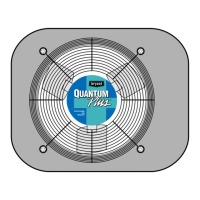

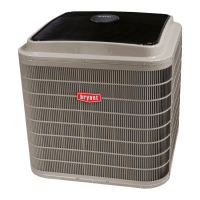

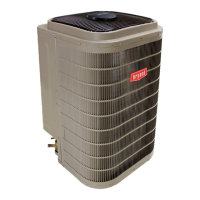
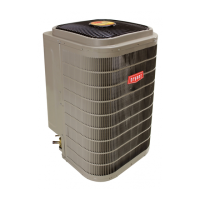
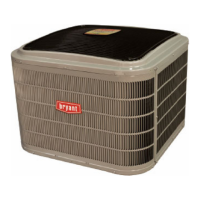
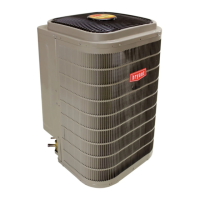
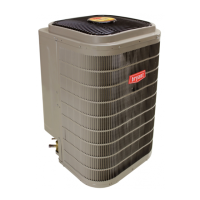

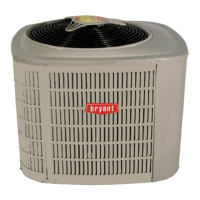
